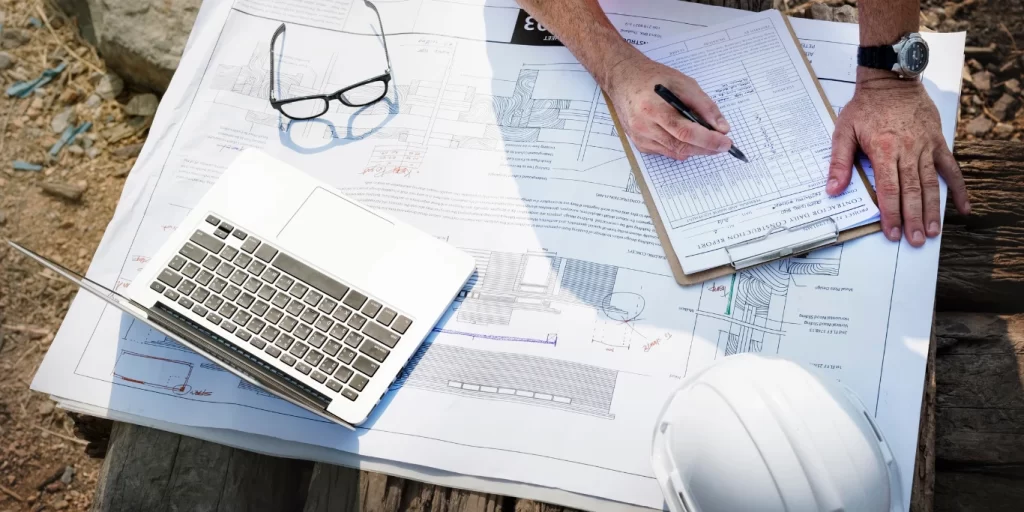In construction, safety is never optional — it’s a legal duty and an operational priority. With strict HSE regulations and increasing site complexity, Site Managers must implement proactive health and safety protocols to stay compliant and protect their workforce. A well-prepared construction safety checklist is one of the most effective tools to ensure no critical safety measures are overlooked.
Whether you’re managing a new build or overseeing refurbishment works, using structured safety checklists will help prevent incidents, reduce liability, and demonstrate due diligence. Below, we explore the top 10 construction safety checklists that every Site Manager should keep in their toolkit.
1. Daily Site Safety Inspection Checklist
This is your frontline defence. A daily checklist ensures all hazards are reviewed before work starts. Key elements include:
- Site access and security
- Emergency exits and signage
- Housekeeping and trip hazards
- PPE availability and use
- Machinery and plant status
Tip: Assign responsibility for morning walkthroughs and log findings consistently.
2. Toolbox Talk Checklist
Toolbox talks are short safety briefings, and a checklist helps ensure they’re consistent and effective. It should include:
- Topic of the day (e.g. manual handling, working at height)
- Attendance record
- Questions and feedback noted
- Actions agreed
Insight: Use recent site incidents or near misses to guide the topic for relevance.
3. PPE Compliance Checklist
Personal Protective Equipment (PPE) must meet legal requirements and be suitable for the task. Check for:
- Helmets, gloves, eye protection, hi-vis gear
- Condition and correct fitting
- Worker compliance checks
- Records of issue and inspection

4. Risk Assessment and Method Statement (RAMS) Review
A checklist ensures RAMS are present, specific, and up to date:
- Task-specific risk assessments completed
- Control measures clearly stated
- Method statements signed by workers
- Reviewed after changes or incidents
Note: RAMS are a legal requirement under the CDM 2015 Regulations.
5. Plant and Equipment Safety Checklist
Plant and machinery are common sources of accidents. This checklist should include:
- Daily and weekly inspections
- Operator licences and training
- Maintenance records
- Safety features (e.g. reversing alarms, guards)
6. Working at Height Checklist
Falls from height remain the leading cause of fatalities in construction. Include:
- Scaffolding inspections
- Harness checks and records
Edge protection - Ladder condition and safe use
Tip: Ensure a competent person signs off high-risk activities daily.
7. Manual Handling Assessment Checklist
To reduce musculoskeletal injuries, use a checklist covering:
- Load weight and handling method
- Team lifting protocols
- Use of lifting aids
- Worker training and awareness
8. Fire Safety and Emergency Preparedness Checklist
Fires and emergency response plans must be regularly reviewed. Include:
- Fire extinguishers and checks
- Clear escape routes
- Alarm tests and drills
- First aid and emergency contacts
9. Induction and Worker Competency Checklist
Before workers set foot on site, use a checklist to verify:
- Right to work documentation
- CSCS cards and NVQ qualifications
- Site-specific induction completed
- Records stored securely

10. Environmental and Waste Management Checklist
This helps you comply with sustainability goals and environmental law:
- Segregation of waste streams
- Use of licensed waste carriers
- Spill kits in place
- Dust and noise control
Note: This ties into your wider site environmental management plan.
Why Construction Safety Checklists Matter
Well-structured safety checklists not only help prevent accidents but also improve team accountability and demonstrate regulatory compliance. When used consistently, they contribute to:
- Reduced insurance claims
- Higher workforce morale
- Lower absenteeism
- Improved client confidence
Are safety checklists legally required on construction sites?
While not all checklists are legally required, risk assessments, RAMS, and certain inspection records are mandatory under the Health and Safety at Work Act and CDM Regulations.
How often should safety checklists be completed?
Daily for inspections, weekly for equipment, and before any high-risk task. RAMS should be updated if conditions or methods change.
CITB Funding Support
Think Construction Skills is a CITB Approved Training Organisation (ATO). If you’re investing in upskilling your Site Managers through qualifications like SMSTS or NVQs, you may be eligible for CITB grant support. We can guide you through the process.
Final Thoughts
Safety in construction is not just about compliance — it’s about leadership. As a Site Manager, using these top 10 checklists can streamline your processes, protect your team, and help you meet legal obligations confidently. Pair these with the right qualifications, and you’ll create a culture of safety from the ground up.
Ready to take the next step? Visit our Construction NVQ Courses or contact us to explore your options.

